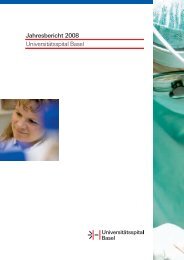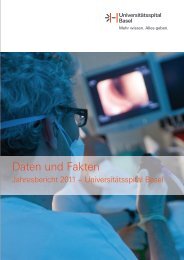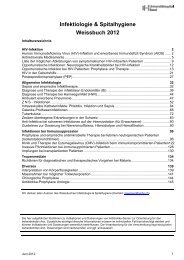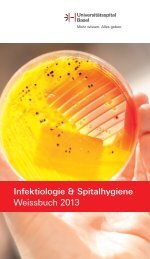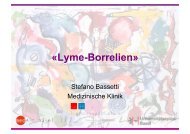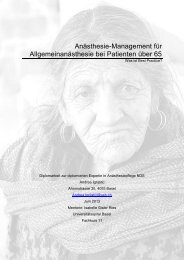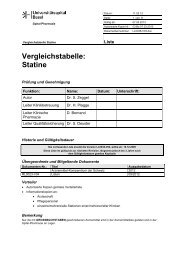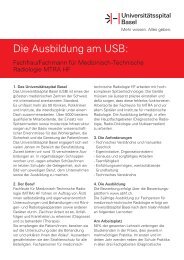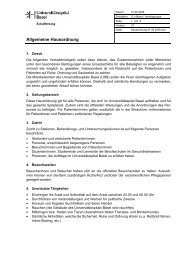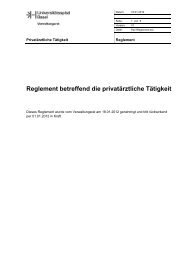Transmucosal Nasal Drug Delivery: Systemic Bioavailability of ...
Transmucosal Nasal Drug Delivery: Systemic Bioavailability of ...
Transmucosal Nasal Drug Delivery: Systemic Bioavailability of ...
You also want an ePaper? Increase the reach of your titles
YUMPU automatically turns print PDFs into web optimized ePapers that Google loves.
Background and objectives<br />
Background and objectives<br />
The most popular nasal drug delivery is nasal application <strong>of</strong> topical decongestants or antiinflammatory<br />
drugs, to treat rhinitis or allergy related symptoms. In addition, for transmucosal nasal<br />
absorbed drugs the nasal route provides direct access to the systemic blood circulation. For drugs<br />
with constricted oral bioavailability, due to degradation in the intestinal tract or hepatic first-pass<br />
effect, transmucosal nasal delivery is an interesting alternative to intravenous and intramuscular<br />
drug administration. A challenge in transmucosal nasal drug delivery is the limited volumetric<br />
capacity <strong>of</strong> the nasal cavities. Therefore, the entire dose, preferably administered in solution, has to<br />
be instilled in a limited volume. Consequently, solubility <strong>of</strong> the drug is one <strong>of</strong> the critical parameters<br />
in transmucosal nasal drug delivery.<br />
Midazolam is a benzodiazepine used for the treatment <strong>of</strong> anxious patients undergoing diagnostic or<br />
surgical procedures (procedural anxiolysis and/or sedation in adults and children) and the<br />
treatment <strong>of</strong> seizures (epileptic or febrile). These therapeutic indications are clinical situations, in<br />
which drug administration is potentially difficult and rapid onset <strong>of</strong> therapeutic effect absolutely<br />
desirable. Intranasal administration <strong>of</strong> midazolam has been <strong>of</strong> particular interest, because <strong>of</strong> the<br />
rapid and reliable onset <strong>of</strong> therapeutic effect and the convenience <strong>of</strong> administration. Due to low<br />
midazolam concentration, the commercially available preparation for intravenous administration<br />
(Dormicum ® , Roche) is not optimal for transmucosal nasal midazolam delivery. For the optimization<br />
<strong>of</strong> transmucosal nasal midazolam delivery minimized administration volumes are essential to<br />
reduce the risk <strong>of</strong> swallowing the administered preparation. Therefore, nasal preparations with<br />
enhanced midazolam concentrations need to be provided.<br />
The aim <strong>of</strong> Project I was the development and in vitro characterization <strong>of</strong> preparations for<br />
transmucosal nasal midazolam delivery. Several solubilization enhancers were evaluated to reduce<br />
the administration volume. For the developed midazolam preparations stability testing was<br />
performed.<br />
The purpose <strong>of</strong> Project II was the pharmacokinetic characterization <strong>of</strong> the developed preparations<br />
for transmucosal nasal midazolam delivery. The influence <strong>of</strong> the vehicle, namely RMβCD<br />
(solubilization enhancer) and chitosan hydrochloride (penetration enhancer) on pharmacokinetic<br />
pr<strong>of</strong>ile <strong>of</strong> nasally delivered midazolam was assessed.<br />
In a multicenter trial (Project III) two midazolam preparations for transmucosal nasal midazolam<br />
delivery were compared in anxious and/or claustrophobic patients undergoing MRI examination.<br />
The objectives <strong>of</strong> this thesis were to provide preparations for transmucosal nasal midazolam<br />
delivery (Project I), to assess the pharmacokinetic characteristics <strong>of</strong> nasally applied midazolam<br />
(Project II), and to compare the benefit <strong>of</strong> two nasal midazolam preparations for procedural<br />
anxiolysis in anxious patients undergoing MRI examinations (Project III).<br />
Katja Suter-Zimmermann Page 7 <strong>of</strong> 188 University <strong>of</strong> Basel, 2008




